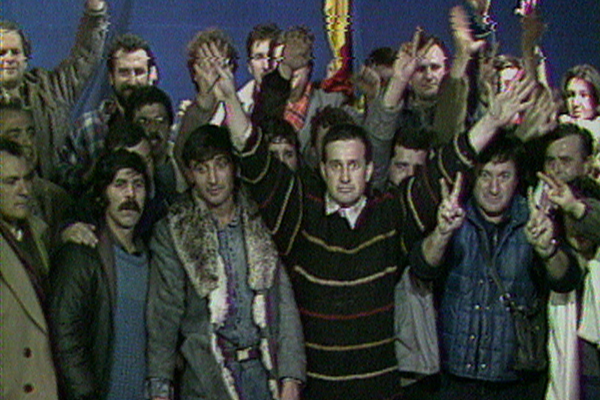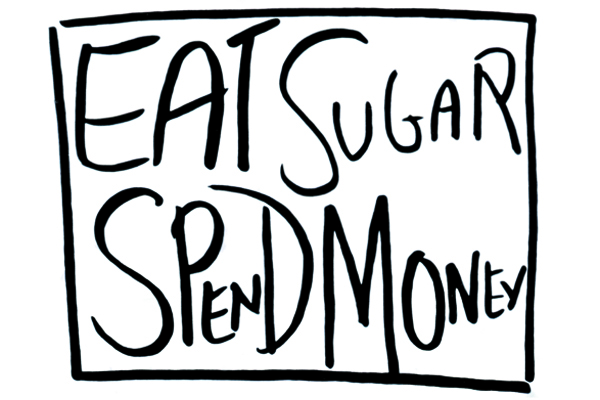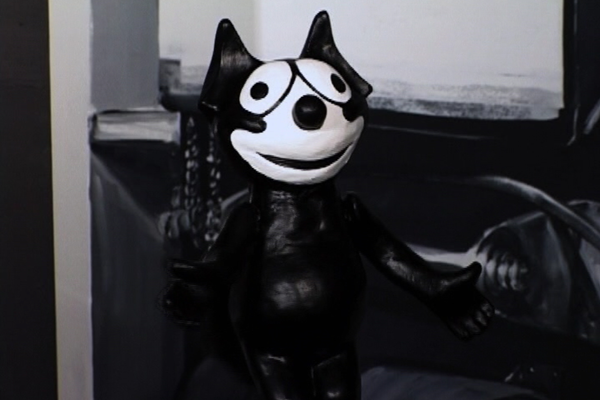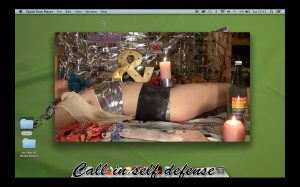“The impact of television on contemporary culture” is what the latest exhibition at the Institute of Contemporary Arts aims to represent. A wide-themed and ambitious project, timed to fit in with the UK’s digital switchover, Remote Control dissects the many faces of a seemingly familiar, domestic object.

The top floor could be nicknamed ‘truth-mongering’. Photographs by Taryn Simon, Martha Rosler and Richard Hamilton present television as a powerful tool for journalists, capturing images of protests and war brought right to your sofa. ‘Cornered’ by Adrian Piper is perhaps the most artful of the truth-mongering pieces. She talks straight to the camera, flanked by two copies of her father’s birth certificate, one indicating that he is white, the other octoroon (1/8th black). This isn’t a piece of journalism, but rather a very personal deconstruction of racial identity. ICA Bookshop Assistant Michael Crowe says he finds Piper the most interesting in the exhibition, not only because she was an early user of television as a medium for art, but also because the piece is “very confrontational, which is not something you find in TV programs ordinarily”.

The message coming from many of the exhibits in Remote Control, is that rather than confronting the viewer, TV is an ode to consumerism. It re-enforces the status quo through advertising, mindless soaps such as Dynasty and seductive escapism of the abstract female. Friederike Pezold’s ‘Mundwerk’ (Mouthwork) depicts images of painted lips up against a television screen, while Richard Serra’s documentary ‘Television Delivers People’ explains:
“You are the product of television (…) You pay the money to allow someone else to make the choice (…) Commercial TV defines the world so as not to threaten the status quo”.
Jessica Diamond continues along the same vein in ‘TV Telepathy’ with the bold words: “EAT SUGAR SPEND MONEY”. But though the ICA describes Diamond as “concerned with pop culture and consumerism”, they appear to underline, or perhaps undermine that message, by placing the artwork isolated in the cafe area, parallel to their lemon tarts.

In the row of televisions acting as historical curios, one documentary stands out: TVTV (Top Value Television) ‘Adland’ filmed in 1974. Though a critique of the advertising industry, where advertising teams believe a good idea is like “chucking poisonous gas against a wall. Poof! Sensational! Yeah!” it is actually a quaint, charming documentary about a time when advertising seemed like a terribly glamorous industry. Jingle writers getting excited about the emphasis on a single word, singing hamburgers and a camel munching on a Camel cigarette as the presenter jokes that the camel is “a cannibal”. What was once a gorilla-style documentary now seems trite compared to current versions. This nostalgia is captured in ‘Felix Gets Broadcasted’, a collage by Marc Leckey that includes the first ever image to be seen on television broadcast of a plastic Felix the Cat, spinning slowly.

Despite the focus on news journalism, the dangers of advertising and taking the threat of consumerism seriously, Remote Control begs the question can television be art? TV might not conjure up paint-splattered studios but Tauba Auerbach achieves a Matrix-like aesthetic in ‘Static III’ and ‘Static IV’. TV was and is about the transfer of images through an information channel. Perhaps it can be a sculptural medium after all, but does that mean that Channel 4 should be storing their now redundant hardware in the entrance? ICA explains that artist Simon Denny has placed Channel 4’s mammoth hardware there as a statement about technological waste. But no, TV stations, that doesn’t mean you can use their entrance hall as a dumping ground this month.
Remote Control is on at ICA from April 3 to June 10















